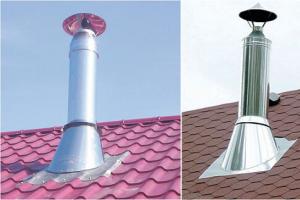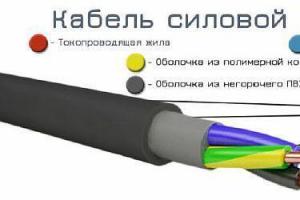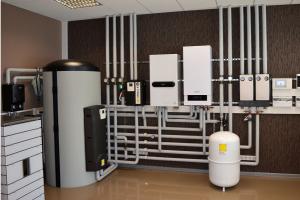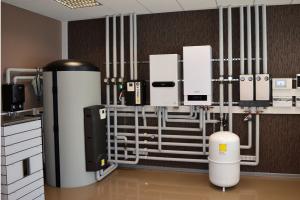When designing a gas heating system, all factors affecting gas consumption are taken into account: the size of the housing, the number of floors, insulation of the main structures, power and how many people live in the house. Heating a private home with gas is beneficial from an economic point of view for several reasons.
Benefits of use
Firstly, it is characterized by high efficiency of the combustion process due to its low sulfur content. This also allows you to save resources for cleaning the boiler. Secondly, it is easy to reduce heat losses and gas consumption with the help of good thermal insulation. Thirdly, gas is also an environmentally friendly material, since when it is burned, a very small amount of harmful substances is released into the atmosphere.
When using gas as a fuel for heating, the boiler walls do not suffer from corrosion, which increases the service life of the equipment. It is convenient to use liquefied gas: it has better quality and is delivered in cylinders to places where there are no highways, making life easier for thousands of people.
Complexity and cost features
Gas consumption for heating a house is directly proportional to the living area of the room. You can calculate the consumption in kW/hours by multiplying the boiler power by the number of hours/day and day/month. 
However, this mode is practically not used for everyday life. The real indicator for calculating gas consumption is the average monthly kW/hour. To do this, the maximum monthly consumption for heating a house is divided in half. If this is a residential building, then the calculation is made based on the length of the heating season.
Algorithm
Data for calculating boiler power are based on the ratio of 1 kW/h per room of 10 m². Thus, to heat a house with an area of 100 m², you will need to divide it by 10: i.e. the required power will be 10 kW/h.
How much gas is consumed for a different size house is calculated according to the same principle, i.e. the area is divided by 10. For example, for an area of 200 m2, the calculation will look like this: 200 m2/10, i.e. 20 kW/hour will be spent on heating this room.

Adjustment for days
Monthly gas consumption is calculated by multiplying the daily requirement of a house of 100 m2 by the number of days in a month: 10 kW/h * 24 hours * 30 days (total - 7200 kW). Since the system usually operates in medium mode, the maximum flow rate is divided in half, and the result is 3600 kW.
Adjustment for the season
If the duration of the heating season is 7 months, then the calculation of gas costs is obtained by multiplying 3600 kW by 7. i.e. heating a private house with an area of 100 m² will cost 25,200 kW. Heating a house of 200 m2 will require 50,400 kW, respectively.

If the heating season is shorter or longer than 7 months, then gas consumption is calculated accordingly by multiplying by the period required by the user.
Knowing the tariff for 1 kW/hour, it is very easy to calculate the monetary equivalent of consumption. The cost of 1 kW/hour may vary depending on the region.
Nuances and additional factors
There are special programs for calculating fuel consumption that will greatly facilitate the work. For apartment buildings that are connected to the main gas supply, consumption standards are established.
Despite the available methods, for a more accurate result it is still recommended to contact specialists. After all, calculating the need for a gas boiler takes into account the use of fuel only for heating the house.
But you also need to remember about the presence of a gas stove and a water heating system, which will increase your costs. The number of people living in a house or apartment is also important for the consumption indicator. All these factors will be taken into account by specialists.
In addition, our experts will help you minimize gas consumption through the use of special technologies.
Features of autonomy
If there is no gas main near a residential or country house, then an autonomous heating system that runs on a mixture of propane and butane is an excellent solution.

The cost of purchasing and installing autonomous heating equipment that uses a mixture of propane and butane as fuel is lower than the cost of connecting to a central gas main.
pros
Such a system reduces the risk of emergency shutdown of pipelines and the threat of a sudden drop in pressure. Autonomous heating has reservoirs that maintain the ability to consume gas for heating for some time.
In the event of a power outage or fuel supply, the safety system with which all boilers are equipped blocks the solenoid valve. After gas supply is restored, you need to start it again.
Tricks for saving
Reducing gas consumption for heating can be achieved in the following ways:
- installation of an automatic control system;
- installation of gas sensors, which will also help to detect leaks in time;
- insulation of the house: sheathing of walls, roofs;
- compliance with the temperature regime in the room with cylinders not lower than 25°C;
- purchasing cylinders from a trusted supplier, since poor fuel quality also reduces efficiency.
These measures make it possible to reduce gas consumption by up to 40%, which makes it possible to use 1 cylinder for 3-4 days.
Let me start with the fact that gas can only be connected to a house that has been built and put into operation. The option of supplying a gas pipeline to an empty area, as with, is impossible.
So, to connect gas to a private house you need:
- Find out the owner of the gas networks and submit an application for training (TU).
- Select gas supply parameters, including the power of the heating boiler.
- Prepare the room for installing the boiler in accordance with the received and current specifications.
- Obtain documents for acceptance of chimneys and ventilation systems in accordance with SNiP.
- Establish and coordinate gas supply systems.
- Installation of equipment, including laying a gas pipeline, installing a boiler and meters.
- Prepare documents (specifications, design, passport of the boiler and other equipment) and call the state acceptance committee to the site.
- Draw up an agreement with a licensed organization in your region (for example, MosGaz), which will ensure the startup of the system and regular monitoring of the condition of the equipment.
- Submit an application to the MFC for permission to supply gas to this house.
How much does it cost to gasify a private home?
The cost of all work on connecting to the gas supply system depends on several factors. This is consumption and existing regional pricing features. As a rule, comfort costs the most in megacities. The leader, of course, is Moscow.
On average, phased gasification costs the following amounts:
- collecting initial documents and filling out an application - from 8,000 to 50,000 rubles;
- carrying out design work - from 3,000 to 20,000 rubles;
- construction of a gas pipeline from a common pipe to an individual system, as well as distribution of pipes throughout the house - 2-5 thousand rubles per meter of length:
- connection, that is, inserting a pipe into the main system - 10-15 thousand rubles.
- inspection work to check the readiness of the facility for operation - 1-2 thousand rubles.
The price for gas connection in the regions is as follows:
- Conducting gas in the Moscow region costs from 200,000 to 700,000 rubles;
- In the Leningrad region the cost is from 150,000 to 300,000 rubles;
- In other regions from 70,000 to 300,000 rubles.
How much does gas supply from a gas tank cost?
Autonomous gas supply consists of:
- gas holder;
- devices that control the gas tank;
- pipe systems that bring gas to the house and distribute it inside the house;
- thermal expansion devices on pipes;
- shut-off valves.
- devices for automatic control of system operation.
The key point in choosing an autonomous system is, of course, the gas tank. The final costs depend on its volume, design and installation. The larger the gas tank, the greater the requirements for it. The container should be located away from the house. This means that you will have to spend money on laying pipes and additional excavation work.
There are two levels of evaluation of an autonomous gasification system - initial and subsequent. At first we are amazed at the scale of the costs and work, and then we rejoice at the level of comfort and forget about the costs. However, the main thing in gas supply is safety. Safety, of course, will be assessed by specialists, but residents are most interested in it, so don’t skimp on equipment - it’s better to save on gas volume.
The optimal price for a safe system with high-quality equipment and a gas tank for 4000 - 5000 liters will be 250,000 - 300,000 rubles. Of course, you can get by with a smaller amount, but at the expense of the risk of using low-quality equipment.
Scheme of gasification of a private house from a gas holder
Gas consumption for heating a house
Gas consumption depends on the needs, condition of the house, climate and availability of other energy sources. If gas is the main source of heat, then the flow rate can be calculated using the formula:
- the area of residential premises is divided by 10, we get the power of the equipment;
- this value is divided by 2, since the equipment is usually not used at full capacity;
- the resulting number is multiplied by the number of days in a month (30), and by the number of hours in a day (24), this will be the amount of energy in kWh;
- Based on the fact that a liter of gas produces 11.2 kW/h, the previous value is divided by 11.2, which will be an indicator of fuel consumption.
For clarity, I will give examples of calculations of gas consumption for heating per month:
- Gas consumption for heating a house of 100 m2: 100/10/2x30 x24/11.2 = 321 liters;
- Gas consumption for heating a house of 150 m2: 150/10/2x30 x24/11.2 = 482 liters;
- Gas consumption for heating a house of 200 m2: 200/10/2x30 x24/11.2 = 643 liters.
In this article we will look at various methods of heating a house, issues that arise when installing gas heating (in particular bottled gas) and calculate the gas consumption for heating a house of 100 m2.
When building or purchasing a private house in a city or village, you need to take care of its heating in the winter.
Many people visit their dachas only on weekends, which is approximately less than two days. The rest of the time the house is naturally empty. There are different types of heating, and we will look at each of them.
Heating types. Advantages and disadvantages
- Main gas. The gas pipeline is not installed everywhere and in many towns and villages it simply does not exist. This is due to many reasons and therefore the option immediately disappears
- Electric heating. Not everyone has the opportunity to connect 10 - 15 kW of power for heating a private home.
In winter, the wires become icy, which causes them to break, and repair teams are often first sent to places where management or wealthy people live. Their houses are repaired first, then they serve densely populated nearby villages, and they get to dacha-type settlements last.
Because of this, the prospect of being left without electricity for several weeks, or even the entire winter, does not seem fantastic. Although, if you are interested in this option, then look at the article about. - Installation of a container (multi-liter tank) for storing refillable gas.
Firstly, it is not cheap and this pleasure will cost at least 170,000 rubles. Secondly, in dacha-type settlements they clean mainly the main street.
This means that you must make your own access roads for the tanker to access your equipment, otherwise you will be left with an empty cylinder all winter. - Pallet boiler. This is an excellent choice, although the boiler and automatic supply system for it will not be cheap, the price starts from 200,000 rubles.
- Solid fuel boiler(firewood, coal, etc.). For its normal operation, you will have to hire a specially trained person and pay him money for preventive maintenance, otherwise the boiler will not work efficiently and may quickly fail.
- Diesel boilers. Firstly, they will also require a lot of investment, since the cost of diesel fuel is comparable to the cost of gasoline. Secondly, you need to stock up on approximately 150 - 200 liters. (per week) or bring with you from one to four cans each time.
Naturally, all that remains is heating a private house with liquefied gas (although there is also an option with installation), especially since centralized supply has been organized to many villages and holiday villages.

Installing a bottled gas system (cylinders, gas heating boiler, reducers, hoses) will cost approximately 40-60 thousand rubles, and almost everyone can afford it.
Gas consumption calculation method
Let us calculate the gas consumption for heating a house with an area of approximately 100-140 m2. The main parameter is the minimum permissible gas pressure in the boiler.
Direct calculation of liquefied gas consumption
Since the cylinder (depending on the refiller and the season) contains from 35 to 42 liters. gas (on average 22 kg), then refilling will cost you approximately 12 - 20 rubles. per liter, which will be 420 - 840 rubles. per cylinder.

With an average boiler consumption of 0.12 kg of gas/hour per 1 kW of heat for a 12-15 kW boiler, the gas consumption rate for heating will be about 1.2-1.7 kg/hour.
This power is quite enough to heat a room with an area of 100-140 m2.
If our boiler functioned at maximum all the time, the consumption would be:
1.7*24=40.8 kg of gas, or almost 2 cylinders per day
The amount will be
(420 – 840)*2 = 840 – 1680 RUR,
And this is naturally not beneficial for the owner.
But since gas heating boilers, with proper settings, selection of all components of the system and the absence of large heat leaks, consume many times less gas (about 3-4 times), then to maintain an acceptable temperature throughout the house, gas costs are significantly reduced.
Advice.
You can buy a boiler with a spare burner for natural gas. Once you have a gas pipeline installed, you will not need to buy a new boiler.
Calculation results for the week
Therefore, in a house with an area of 100-140 m2, normally insulated, with windows of good quality, without obvious cracks and cracks, at an outside temperature of -18 -23 degrees, and inside the house about 21-23 degrees, the average gas consumption for heating the house will be about 10-13 kg in one day (half a regular cylinder).

This means that gas consumption for heating is 1 standard cylinder for 2 days. From the experience of those who have been using such a heating system for a long time, it is clear that at 21-23 degrees in the house and the presence of hot water in the bathroom and kitchen, you will use only 3-4 gas cylinders per week (1700-3300 rubles).
Methods and ways to reduce costs
There are instructions and many videos on the Internet on how to reduce costs. As the calculation of gas consumption for heating shows, the total cost reaches 3000 rubles.
But it can be significantly reduced. To do this, you can install an automatic system that reduces the temperature at night, during your sleep (naturally, the amount of gas burned is also reduced).
Those who have already acquired such systems confirm that if from 12-00 at night to 8 a.m. the temperature is lowered by 6-7 degrees, this will reduce gas costs by about one third.
This means that you will consume only two cylinders of gas per week (RUB 840-1,700).
But this is not the limit. You don’t have to buy automatic equipment and regulate the gas supply yourself at night.
Advice!
Cylinders can be stacked or placed together.
This will reduce the cost of wiring hoses, and you can make a box for cylinders yourself or order it. Two options for cylinder locations are shown in the photo
Calculation of gas consumption and costs for the heating season
As can be seen from the previous calculation and based on ways to reduce the cost of heating a house with automation, it takes about 10 cylinders per month.
For example, if you go to the dacha only on weekends and holidays, then over the entire heating season (from October to April) there are 30-35 days - a little more than a month.
Gas installations for heating a home are beneficial in terms of savings. In addition, the automatic heating process almost completely eliminates the use of human labor. The overall benefit from using gas is calculated individually.
For example, gas consumption for heating a house of 150 m2 depends on the power indicators of the equipment. The higher the power, the higher the fuel consumption. The total amount of gas consumption can be calculated by multiplying the power of the equipment by 720 (average). Remember that the data obtained is approximately correct, because the time of use directly depends on the temperature, latitude zone, and insulation of the house.
Is it profitable to install autonomous heating?
The cost of purchasing, installing and setting up autonomous heating equipment that runs on a mixture of propane and butane is much lower than connecting to the main line.
This system also significantly reduces the risk of a sudden drop in pressure. Autonomous heating is equipped with tanks that keep the fuel available after it runs out in the main tank.
If gas is supplied, the safety system will block the solenoid valve. Once the supply is restored, the system must be restarted.
Experts' opinions
Forumhouse offers profitable solutions. Gas consumption for heating a house of 150 m2, according to experts, depends on the efficiency of the boiler, the correctness of the installed system, and the equipment manufacturer. For the most detailed cost calculation, you should consider:
- cost of combustible materials;
- operating costs;
- cost of equipment, its delivery and installation;
- air temperature during cold periods;
- mode of residence in the house (temporary or permanent);
- degree of modernization of the building (material of construction, presence of insulation, etc.).

Example: Forumhouse user used the following as calculation data:
- house area - 150 m2;
- duration of the heating period - 6 months;
- System efficiency - 0.5;
- specific power of the climatic zone is 1.5 kW.
After calculations, the following results were obtained:
- the average volume of raw materials to produce 1 kW/h of heat is 0.1 m 3 ;
- gas cost (approximate) - 5 rubles/m 3;
- the cost of 1 kW/h of gas is 0.5 rubles;
- heating costs for the season - 11,000 rubles.
Advantages and disadvantages of using gas boilers over large areas
Gas heating has its benefits:
- When using this fuel, the boiler walls are not damaged by corrosion. This factor increases the service life of the equipment.
- Gas is an environmental material. When it burns, virtually no harmful substances are released into the atmosphere.
- Due to the small amount of sulfur, high gas combustion efficiency is achieved.
The use of gas boilers is also beneficial:
- Installing equipment is much cheaper than connecting to the main line;
- Gas in cylinders has better properties.
- The operation of the boiler does not depend on pressure and breakdowns in the main line.
- Gas consumption for heating a 150 m2 house in winter is significantly reduced.
- Modern equipment is equipped with various security systems. This is important, because gas is a flammable and explosive substance.
Disadvantages include:
- the need for constant replacement of cylinders;
- dependence on atmospheric pressure;
- shutting down the system automation in the event of a lack of electricity.

Important! Regardless of which system the boiler is powered by (autonomous or mains), at the beginning of the heating season the settings should be checked and adjusted. Repairs should only be carried out by a specialist. Do not forget about mandatory room ventilation and compliance with safety precautions.
Influence on gas consumption of a gas holder in a house of 150 sq.m. m
The main parameter that affects the gas consumption for heating a 150 m2 house from a gas tank is the evaporation mirror.
A gas holder is a special tank for storing gaseous substances.
The evaporation surface is the area of natural gas evaporation inside the gas tank. The larger the area, the greater the amount of heat.
Gas consumption and heating efficiency are influenced by the climatic conditions of a particular area. Therefore, calculations and selection of equipment should be carried out by specialists.
One 4.8 ton is enough for approximately 160-240 days of work. In this case, the consumption per 1 m 2 ranges from 20 to 30 liters per year. During the warm period, the amount of fuel used is significantly reduced.

When calculating gas consumption, you should take into account the main set of equipment, losses in the gas pipeline, additional modules (number and area of radiators, heated floors, etc.).
The average gas consumption from the gas tank is given in the calculations.
An approach to choosing a heating installation for a house with an area of 150 square meters. m
It is necessary to determine:
- the most affordable energy source in the region;
- ease of use (house area, complexity of equipment, etc.).
It is also necessary to take into account the environmental friendliness of the product and the availability of its delivery.
How to reduce gas consumption
Each fuel saving measure per 1 square meter can significantly reduce gas consumption for heating a 150 m2 house. These include:
- Insulation of walls (inside or outside), as well as floors and roofs, replacement of windows.
- Application of various methods to optimize the heating process (for example, automatically reducing the amount of fuel supplied, turning off the system, etc.).
- Organizing the launch of heated air into the system. More than half of the energy is spent on heating the cold air that enters the building from the outside.
- Application of the "Warm Floor" system. In this case, the coolant heats up to approximately 50°, and in the radiator system - up to 90°.
Example of calculating gas consumption
In reality, for heating 1 sq. m of room requires approximately 50 W of energy per hour. Accordingly, gas consumption for heating a house of 150 m2 will be 7500 W/h, or 7.5 kW/h.

To calculate the volume of the required amount of fuel for a given area, the formula is used:
L = Q / (qh x 0.92), where:
- L is the amount of fuel consumed per 1 hour, m3.
- Q - power required for heating, kW.
- qh is the lowest heat of combustion of fuel (for this case - 10.175 kW/m 3).
- 0.92 - efficiency factor of the boiler installation.
Thus, the gas consumption for heating a house of 150 m2 in cubes looks like this:
- 7.5 / (10.175 x 0.92) = 0.80 m 3 / h of natural gas.
- 0.80 x 24 = 19.2 cubic meters, and for a month - 19.2 x 30 = 576 cubic meters.
Consumption per 1 m2 per month will be: 576 /150 = 3.84 cubic meters.
Consumption of bottled gas for an area of 150 m2
In order to calculate what gas consumption for heating a 150 m2 house the owner expects, it is necessary to calculate the gas consumption in kilograms and then convert the value into liters.
For example, the calorific value of gas is 13 kW/kg. Substitute into the formula given above and get:
7.5 / (13 * 0.92) = 0.62 kg/h.

One liter of liquefied gas weighs approximately 0.55 kg, which means that for an hour of heating a house you will need: 0.62 / 0.55 = 1.12 liters. Per day - 27 liters, and per month - 811.
Considering the standard volume of the cylinder (42 l), you can calculate the required number for 30 days: 811/30 = 19 pieces.
Important! By choosing the right heating equipment and combustible materials, you can significantly save on utility bills. Insulating your home further reduces heating costs.
Heating using liquefied gas is more expensive than connecting your home to the main pipeline. However, “blue fuel” has been and remains the cheapest source of energy for heating systems in residential and industrial buildings. Moreover, the feasibility of using its liquefied or natural version can be determined only after calculating the gas consumption for heating the house. This is what we will do.
How to calculate the need for thermal energy
The simplified formula for this calculation looks very simple - 1 kW of thermal energy is spent on heating 10 m2 of building area. A more accurate formula operates not with areas, but with the cubic capacity of the house, also taking into account the height of the ceilings in the room. But for standard-type dwellings with a ceiling height of 2.5-2.7 meters, the above simplified proportion is valid. An accurate calculation of the need for thermal energy operates not only on the volume of heated space, but also on the heat resistance of walls, openings and ceilings. In addition, in this case, the average annual temperature and other nuances are taken into account.
However, in order to calculate the volume of fuel, a simple formula will be enough for us: 1 kilowatt = 10 square meters. As a result, heating a building with an area of 150 or 200 square meters requires spending 15 or 20 kW, respectively. And this is only an hour. But the boiler does not consume gas every minute. The work/downtime period here is divided in the proportion of 50/50 percent. Therefore, per day, a house with an area of 150 square meters will spend 180 kW (15x24/2), and a home with an area of two hundred square meters will spend 240 kW.
The cold season in our latitudes lasts from October to April - 7 months or 210 days. Therefore, annual thermal energy consumption will be 37,800 and 50,400 kW. We will focus on these values in our further calculations.
How much heat does liquefied or natural gas give off?
We already know the annual consumption of the heating system. Now we must calculate the calorific value of the energy source itself - liquefied and natural gas. Using these values, we can come up with the amount of substance burned in the firebox of a gas boiler per year.
Calorific value is the ratio of the amount of kilowatt of energy released during fuel oxidation to a unit of mass or volume. Since we are interested in main (natural) or liquefied gas used for heating the house as an energy source, we will use cubic meters or liters as a measure of the substance. According to the tabular data, the calorific value of natural gas is 33.5 MJ/m 3 or 9.3 kW/m 3 (a coefficient of 1 kW = 3.6 MJ is used for conversion). That is, when a cube of gas is burned, 9.3 kW of thermal energy is released.
Liquefied gas is a mixture of propane, ethylene and other flammable carbohydrates. And it is more “caloric” than dietary natural fuel. According to tabular data, the calorific value of a kilogram of such a substance is 45.20 MJ or 12.5 kW. But the generally accepted “unit of measurement” for liquefied fuel is liters, and its density is 0.524 kg/l. Therefore, we can say that when a liter of liquefied mixture is burned, 6.55 kW of thermal energy is released.
Calculation of fuel volume for heating a house
So, above in the text we have established that from a cubic meter or liter of natural or liquefied gas, 9.3 or 6.55 kW of thermal energy is released, respectively. This means that to generate 37,800 and 50,400 kW (costs for the cold season for houses of 150 and 200 square meters) we will need:
- 4064 and 5419 cubic meters of natural gas (37800/9.3 and so on).
- 5771 and 7695 liters of liquefied fuel (37800/6.55 and so on).
For accuracy, we must add 10% to these values, since the efficiency of a gas boiler is 90 percent (a tenth of the gas combustion energy is wasted). As a result, we see the following picture:
- The estimated gas consumption for heating a house with an area of 150 m2 is 4471 m3 or 6348 liters.
- The approximate fuel consumption for heating a building of two hundred square meters is 5960 m 3 or 8464 liters.

The indicated gas consumption is calculated for the entire cold season - seven months, from the beginning of October to the end of April. Therefore, in a warm year, you will most likely spend less gas than we calculated. However, even these results make it possible to determine whether natural or liquefied fuel is more profitable.
Which gas to choose - which is more profitable?
To connect to the main gas pipeline, the user will have to pay for the project and installation work. And these expenses cannot be called insignificant. The growing appetites of gas services make gasification of homes a very expensive undertaking. However, all these expenses pay off during operation. As of March 2017, the cost of a cubic meter of gas, depending on the region of the Russian Federation, ranges from 4.44 to 8.66 rubles. The average price is 6.55 rubles. As a result, heating a house with natural gas of 150 or two hundred square meters, taking into account the estimated consumption rate for the season, will cost 29,825 and 39,038 rubles.
Liquefied fuel does not require insertion into the main line, but to store it it is necessary to build a gas tank - a container that accepts the required volume of fuel. In addition, this container will have to be periodically filled with gas, which is delivered to the site using special transport, and this service is not cheap. And the gas tank will have to be repaired and maintained. After all, the safety of all residents of a house heated by liquefied gas depends on its condition.

At the beginning of spring 2017, a liter of liquefied gas at gas stations cost from 11 to 20 rubles, depending on the region of the Russian Federation. The average cost of this fuel was 15.5 rubles. Therefore, heating a 150-square-meter house with liquefied gas will cost 98,394 rubles. For housing with an area of two hundred square meters you will have to pay even more - 131,192 rubles. As you can see, liquefied fuel has surpassed natural gas in cost by 3.3 times. Therefore, conclusions regarding whether it is profitable or unprofitable suggest themselves - natural (main) gas, with all the bureaucracy and complexity of the connection process, will be much more profitable than liquefied fuel.
How to reduce fuel consumption for the owner of a private house
The amounts mentioned above can stun an impressionable tenant or an ordinary citizen. Well, what can you do - “your own home” was an expensive pleasure at all times. However, unlike a city dweller living in an apartment, the owner of a private home can change heating costs in his favor.

To do this, he will need to do the following:
- Insulate the facade, foundation, roof, attic and basement floors - even a thin layer of thermal insulation material can make up at least a couple thousand, or even a whole ten, from the gas bill.
- Replacing old windows with modern double-glazed windows, installing a heat-resistant panel in the doorway is another 5-10 thousand minus. Moreover, doors and windows should be tackled first, since they generate at least 40 percent of heat losses.
- Install a heat accumulator in the basement or boiler room, change the wiring diagram to a double-circuit or manifold version, which provides the possibility of point thermoregulation of radiators, purchase a boiler with high efficiency. Now there are excellent 95% devices on sale. In this case, savings can be up to 10-15 percent of the total bill.
In short, it is necessary, firstly, to increase the heat resistance of the house, and secondly, to use more energy-efficient equipment. And no one is forcing you to make these changes in one season. You can start with windows, then improve the boiler and get to the walls and ceilings. As a result, you can save up to a quarter of the stated costs.








